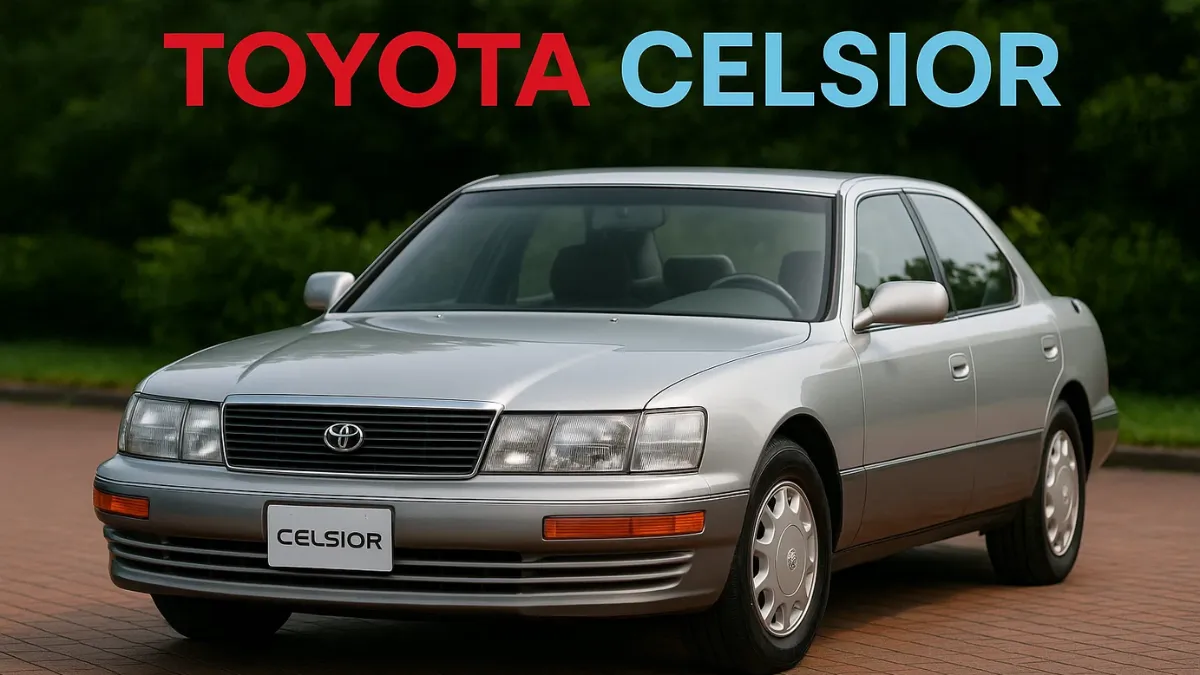When it comes to premium automobiles, Toyota is often associated with reliability, affordability, and practicality. However, the Toyota Celsior, which debuted in Japan in 1989, represents something much greater: the brand’s bold entry into the global luxury market. Known internationally as the Lexus LS series, the Celsior was Toyota’s answer to established German luxury sedans such as the Mercedes-Benz S-Class and BMW 7-Series.
The Celsior combined refined engineering, luxurious interiors, advanced technology, and unmatched reliability, establishing Toyota’s credibility in the high-end luxury segment. While Lexus became the brand identity in North America and other markets, the Celsior name continued in Japan until 2006, building a reputation as one of the most luxurious and dependable sedans in the world.
This article dives into the history, design, performance, luxury features, safety, technology, market influence, and long-term appeal of the Toyota Celsior.
History and Evolution of the Toyota Celsior
The Celsior was first launched in October 1989, and it marked the birth of Toyota’s luxury division, Lexus, in overseas markets.
- First Generation (UCF10; 1989–1994): Featured a 4.0L V8 engine, smooth automatic transmission, and groundbreaking NVH (Noise, Vibration, Harshness) suppression.
- Second Generation (UCF20; 1994–2000): Introduced more advanced suspension systems, improved aerodynamics, and additional luxury features.
- Third Generation (UCF30; 2000–2006): Featured a refined V8, modern safety tech like adaptive cruise control, and larger dimensions.
In 2006, Toyota unified its branding and phased out the Celsior name in Japan, rebranding the model globally under the Lexus LS banner.
Design and Exterior
The Toyota Celsior was designed to reflect understated elegance—a philosophy that appealed to both corporate executives and elite customers.
Key Exterior Features:
- Aerodynamic Design with a drag coefficient as low as 0.29.
- Sleek Headlamps with HID (High-Intensity Discharge) lighting in later models.
- Chrome Accents around grille and windows for luxury appeal.
- Balanced Proportions emphasizing rear passenger comfort.
- 18-inch Alloy Wheels with premium finishes.
The Celsior stood out not with flashy styling but with timeless sophistication.
Interiors: Luxury Meets Comfort
The cabin of the Toyota Celsior was designed with a focus on maximum passenger comfort and cutting-edge technology for its time.
Interior Highlights:
- Leather Upholstery with wood grain accents.
- Multi-Zone Climate Control for all passengers.
- Electrically Adjustable Seats with heating, ventilation, and memory function.
- Premium Audio System developed with Mark Levinson in later models.
- Soft-Close Doors and Power Curtains for rear passengers.
- Exceptional NVH Insulation ensuring a whisper-quiet ride.
The Celsior epitomized Japanese craftsmanship blended with luxury innovation.
Engine and Performance
At its core, the Celsior offered refined V8 powertrains engineered for smoothness rather than outright aggression.
Performance Specs (varied by generation):
- Engine: 4.0L 1UZ-FE V8 / later upgraded to 4.3L 3UZ-FE V8.
- Power Output: 260–290 PS.
- Torque: 353–430 Nm.
- Transmission: 4-speed / 5-speed automatic, later 6-speed.
- Drivetrain: Rear-wheel drive.
The car wasn’t designed for sporty driving but rather effortless cruising. Its hallmark was unmatched ride quality, smooth acceleration, and reliability.
Ride and Handling
One of the biggest achievements of the Toyota Celsior was its suspension and ride comfort.
- Air Suspension with adjustable ride height and damping (available in later models).
- Adaptive Variable Suspension (AVS) for smooth handling.
- Long Wheelbase ensuring better rear-seat comfort.
- Noise Reduction Engineering made the cabin quieter than rivals.
The Celsior was engineered for those who valued comfort and refinement over sporty handling.
Technology and Features
Toyota positioned the Celsior as a technological showcase.
- Keyless Entry and Push Start (advanced for its era).
- Navigation System with early touchscreen interface.
- Adaptive Cruise Control introduced in later generations.
- Rain-Sensing Wipers and Automatic Headlamps.
- Rear Entertainment Screens in select trims.
- Electrochromic Mirrors reducing glare automatically.
These innovations placed the Celsior ahead of many luxury rivals in terms of tech adoption.
Safety Features
The Toyota Celsior prioritized passenger safety, setting benchmarks in its segment.
- Dual Front and Side Airbags (later models had curtain airbags).
- ABS with EBD and Brake Assist.
- Traction Control and Vehicle Stability Control (VSC).
- Crumple Zone Engineering for crash safety.
- Pre-Collision Safety System (PCS) in the third generation.
These safety features made it one of the most secure sedans of its time.
Influence on Global Markets
While the Celsior name was Japan-specific, it was sold globally as the Lexus LS.
- In the U.S., the Lexus LS400 (Celsior’s global counterpart) disrupted the German luxury market by offering more reliability, better pricing, and equal levels of luxury.
- The success of the LS/Celsior established Lexus as a premium brand worldwide, rivaling Mercedes and BMW.
- In Japan, the Celsior became a symbol of status and wealth, especially among business leaders.
Long-Term Reliability
One of the strongest points of the Toyota Celsior was its legendary reliability.
- The 1UZ-FE V8 engine is considered one of the most reliable engines ever built.
- Many Celsiors still run flawlessly even after 300,000+ km.
- Low maintenance costs compared to European rivals.
This reliability gave the Celsior a strong used-car market presence even years after its production ended.
Collectibility and Legacy
Today, the Toyota Celsior is considered a collector’s gem, especially the early models.
- Car Enthusiasts appreciate its build quality and timeless design.
- VIP Car Culture in Japan often modifies Celsiors with custom body kits, low suspension, and luxury upgrades.
- Its global counterpart, the Lexus LS, continues to be a flagship sedan, proving the lasting impact of the Celsior brand.
Conclusion
The Toyota Celsior was more than just a luxury sedan—it was a statement of Toyota’s engineering excellence and global ambitions. With its refined design, comfortable interiors, reliable V8 engines, advanced technology, and strong safety features, the Celsior not only rivaled German sedans but also redefined luxury for millions of buyers worldwide.
Even though the Celsior name was discontinued in 2006, its spirit lives on in the Lexus LS series, which continues to carry forward the legacy of luxury, comfort, and dependability.
For car enthusiasts, collectors, and luxury car lovers, the Toyota Celsior remains a timeless symbol of Japanese innovation in the global automotive market.








